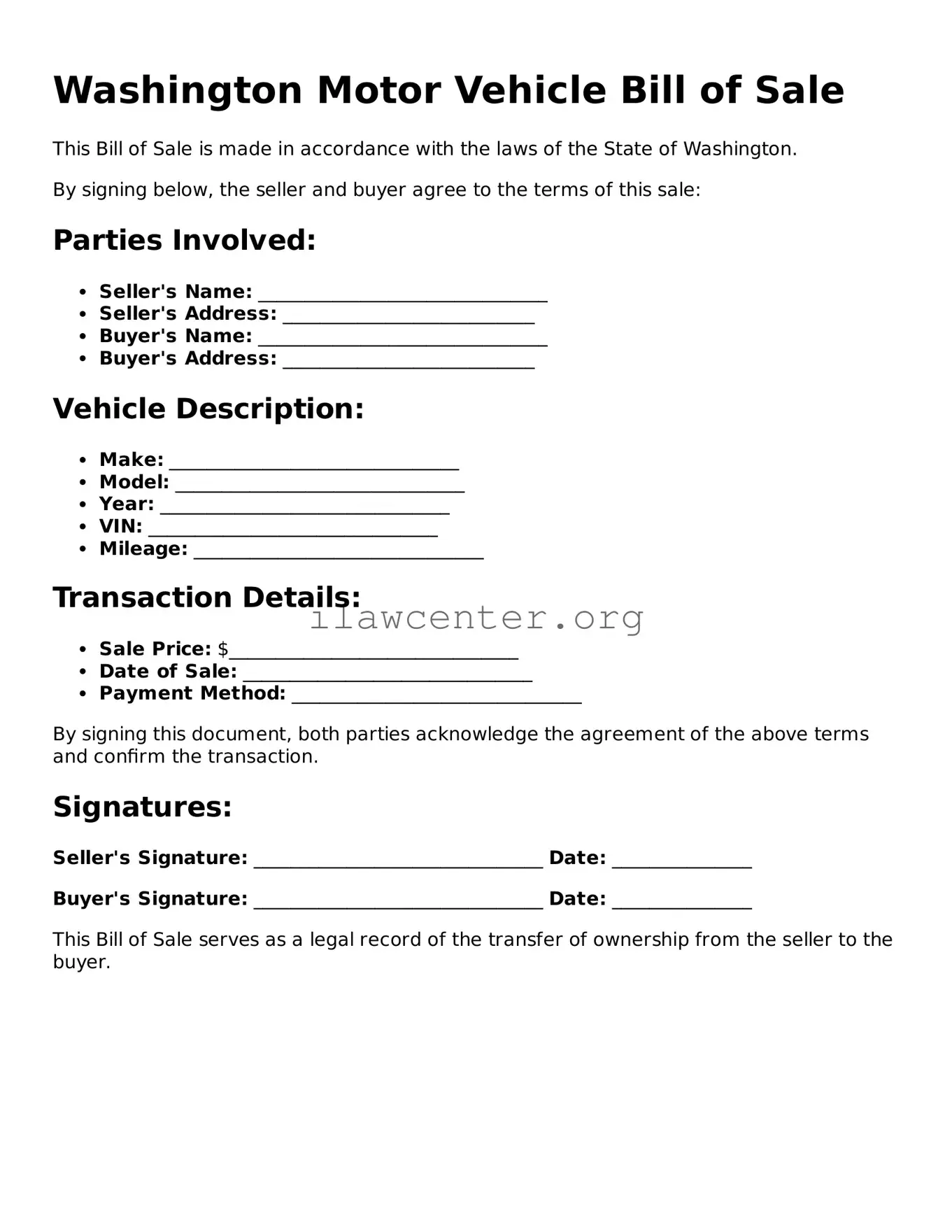What is the Washington Motor Vehicle Bill of Sale?
The Washington Motor Vehicle Bill of Sale is a legal document that records the sale and transfer of ownership of a motor vehicle from a seller to a buyer. This form provides proof of the transaction and contains essential details about the vehicle, the sale price, and both parties involved. It serves as a safeguard for both the buyer and seller, ensuring that the sale is documented properly.
Why do I need a Bill of Sale?
A Bill of Sale is important for several reasons. It protects the rights of both the buyer and the seller. For the buyer, it serves as proof of ownership and can be required when registering the vehicle. For the seller, it acts as evidence that they no longer own the vehicle, which can protect them from future liabilities. Additionally, it's useful if any disputes arise regarding the transaction.
What information is required on the Bill of Sale?
To ensure the Bill of Sale is valid, it should include specific information. This includes the names and addresses of both the buyer and seller, detailed information about the vehicle such as the make, model, year, Vehicle Identification Number (VIN), and the sale price. Date of the transaction and any additional conditions of the sale may also be incorporated to clarify the agreement further.
Is the Bill of Sale required for all vehicle transactions in Washington?
While it is not legally required in all cases, having a Bill of Sale is highly recommended for vehicle transactions in Washington. For private sales, it is wise to create one to confirm the details of the transaction. Failure to provide a Bill of Sale can result in complications regarding ownership transfer, especially during the vehicle registration process with the Department of Licensing.
Can I create my own Bill of Sale, or do I need an official form?
You can create your own Bill of Sale in Washington as long as it includes all the necessary information regarding the sale. However, using a standardized form can be beneficial, as it ensures that all critical details are covered and may streamline the registration process. Many resources are available online, offering templates tailored to Washington state requirements.
What if the vehicle is financed? Is a Bill of Sale still needed?
If the vehicle is financed, it's still highly recommended to complete a Bill of Sale. However, additional steps may be necessary. You should check with the financing institution to determine whether they will allow the transfer of the vehicle title to another party. Often, the lender has a claim on the vehicle until it is paid off, which can complicate the sale process.
How do I ensure the Bill of Sale is valid?
To ensure the Bill of Sale is valid, both the buyer and seller should sign the document. It's also advisable to have the signatures notarized, which adds an extra layer of authenticity and may be required for certain transactions. Keeping copies of the document is essential for both parties, as it serves as a permanent record of the sale.
What do I do with the Bill of Sale after the sale?
After completing the sale, both the buyer and seller should retain copies of the Bill of Sale for their records. The buyer may need to present the Bill of Sale at their local Department of Licensing when registering the vehicle in their name. Keep it stored safely, as you might need it for future reference or in case of any disputes.
